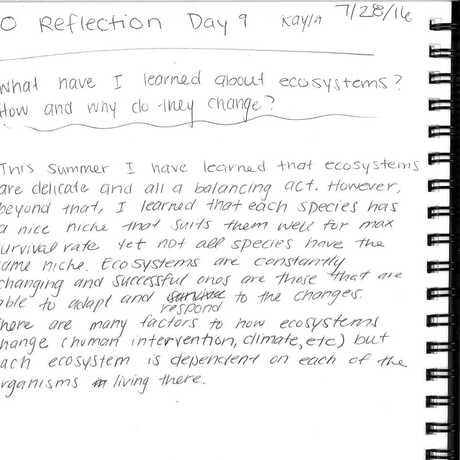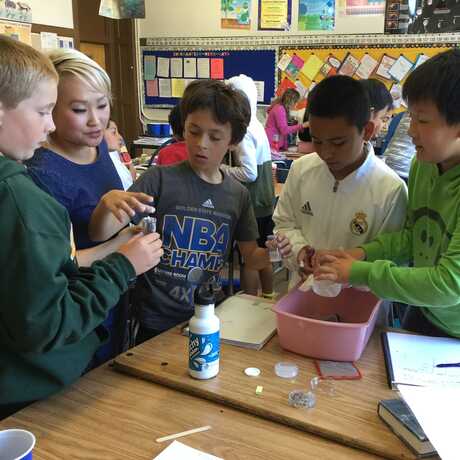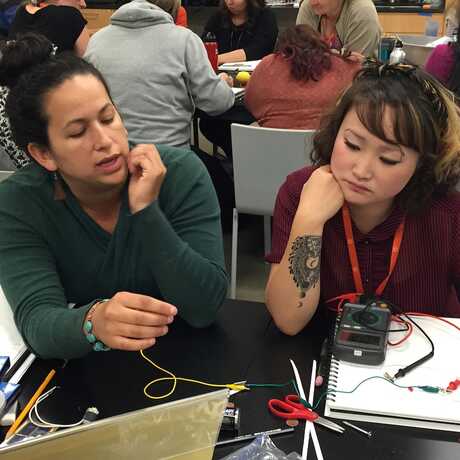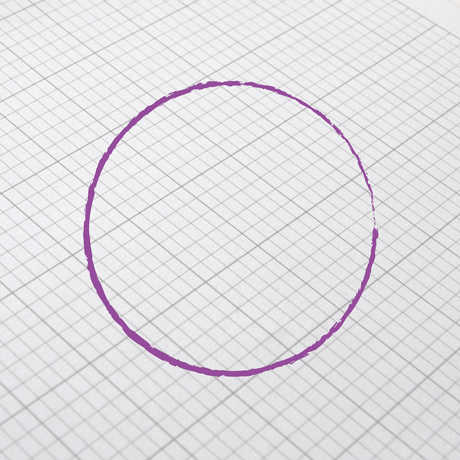
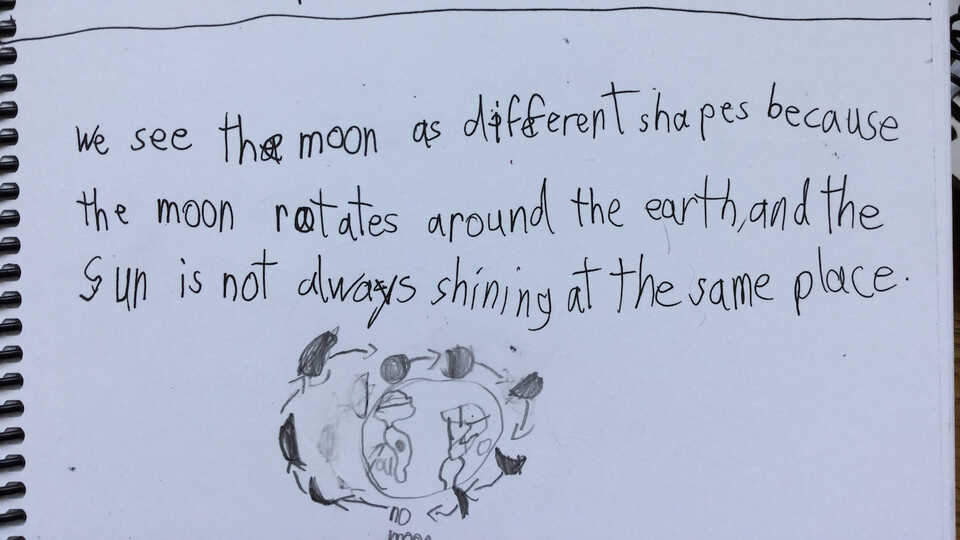
When during the unit should you have students construct answers to the Essential Question, and how does a science notebook help?
About This Guide
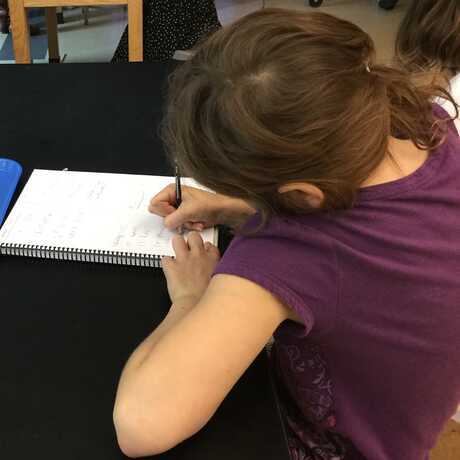
Below, you'll find guidance related to reflecting on essential questions, including:
- How, when and why students should answer the essential question
- Strategies for making meaning as a class
- An example from the classroom
Because we know teachers appreciate seeing the results of using these strategies, we've also created an example gallery containing student work.
Why and When to Answer the Essential Question
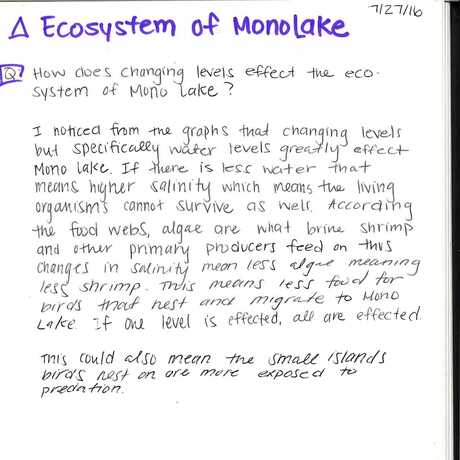
WHY: The Essential Question frames the learning for the unit. Learn more about how to choose a question here. Figuring out the answer to the essential question is usually the goal of all the learning activities. When students answer the question, they will have the satisfaction of recognizing what they’ve learned. It’s also an opportunity for you to assess the depth of their understanding.
WHEN: We recommend giving your students more than one opportunity to answer the essential question. The notebooks are a great place for them to keep track of their answers and how they change over time. Depending on the question, students may have an answer before the unit even begins. Give them a chance to record these initial thoughts. Mid-way through the unit, invite students to return to their answers and revise them. Return to the question at the end of the unit as well. Ask students: What do you think now? How has your thinking changed? What makes you think that? Here is an example of one student's answer to the Essential Question at the end of an ecosystems unit.
How to Answer the Essential Question
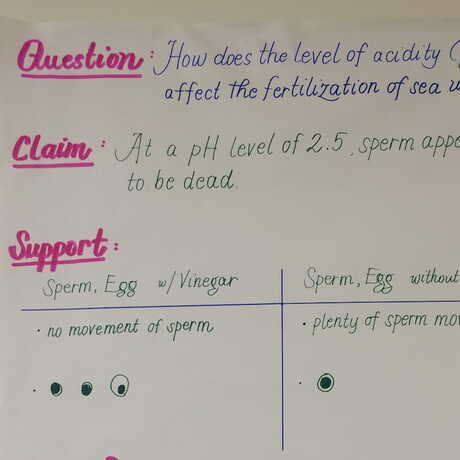
Prepare your students for success by inviting them to craft an answer to the question when they are immersed in relevant evidence and experiences. Perhaps they’ve just analyzed a set of data, or completed a gallery walk of experiments or mental models created by their peers. Consider what format you’d like students to use to answer the question. Is writing sufficient? Would it be better for students to draw their understanding or engage in a talk strategy? Another option is a hybrid approach of writing, drawing, and talking.
Notes from the Classroom
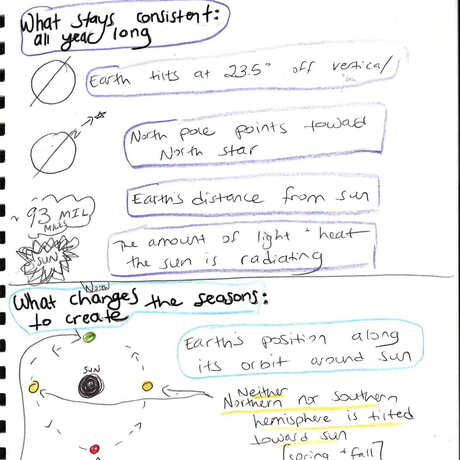
Sarah taught a seventh grade unit with the essential question: “What causes the seasons?” Students spent several days manipulating globes and other models to understand why we experience changes in temperature and day length throughout the year.
Periodically, Sarah asked students to do a quick-write in their notebooks describing their current answer to the essential question. At the end of the unit, each student created a scientific sketch to answer the question. Here's an example of one student's sketch.
They then participated in the talk protocol, "Stronger and Clearer Each Time" [i]. Here's how it worked: Each student found a partner and explained his/her drawing. After hearing and seeing their first partners’ ideas, they had a chance to revise their drawing and understanding before sharing with a second partner. They repeated the process, exchanging ideas three times in all. Their understanding of the seasons became stronger and clearer each time they shared.

Science Notebook Corner
Learn how notebooks can help your students think and act like scientists.
